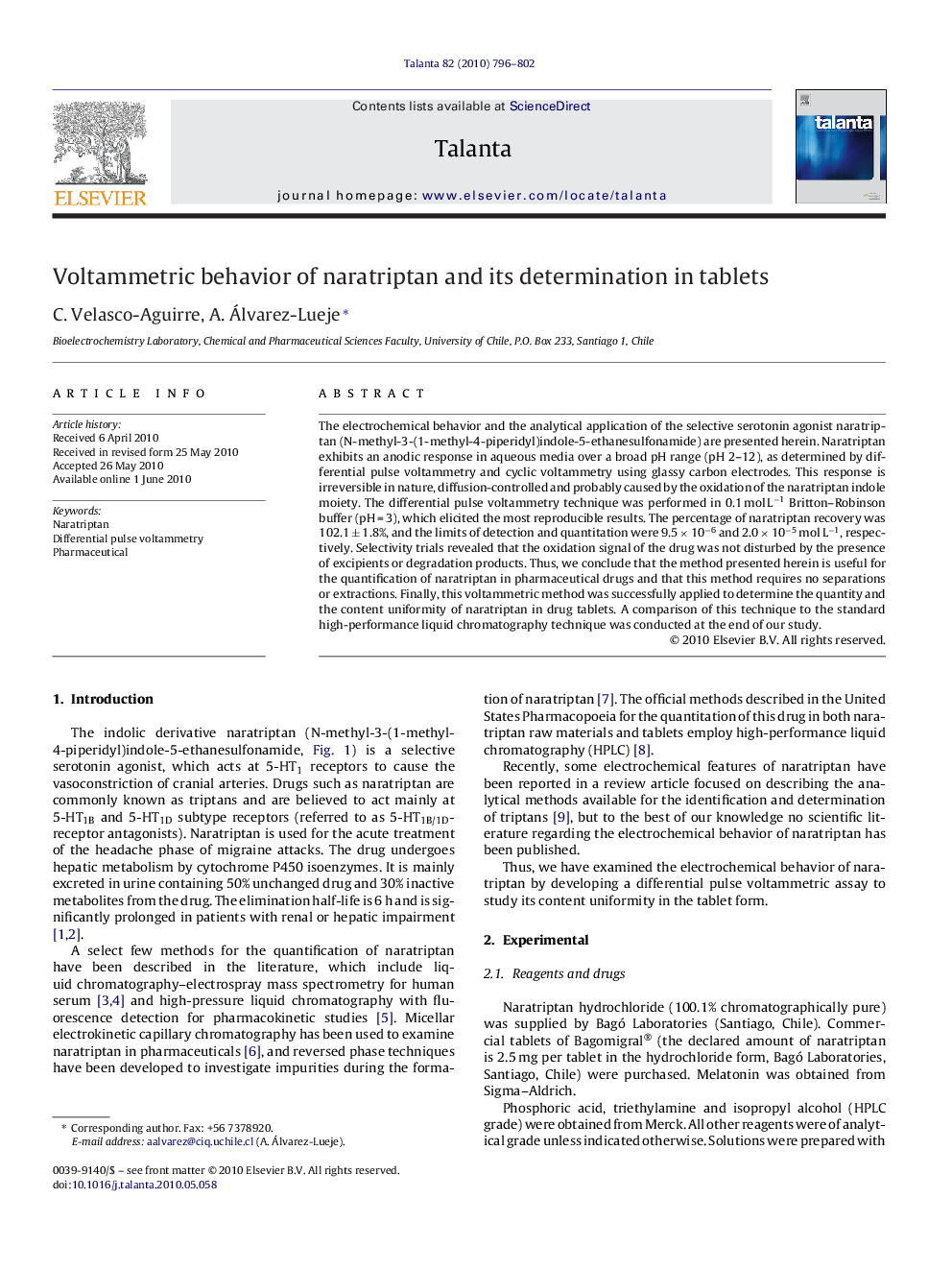| Article ID | Journal | Published Year | Pages | File Type |
|---|---|---|---|---|
| 1244722 | Talanta | 2010 | 7 Pages |
The electrochemical behavior and the analytical application of the selective serotonin agonist naratriptan (N-methyl-3-(1-methyl-4-piperidyl)indole-5-ethanesulfonamide) are presented herein. Naratriptan exhibits an anodic response in aqueous media over a broad pH range (pH 2–12), as determined by differential pulse voltammetry and cyclic voltammetry using glassy carbon electrodes. This response is irreversible in nature, diffusion-controlled and probably caused by the oxidation of the naratriptan indole moiety. The differential pulse voltammetry technique was performed in 0.1 mol L−1 Britton–Robinson buffer (pH = 3), which elicited the most reproducible results. The percentage of naratriptan recovery was 102.1 ± 1.8%, and the limits of detection and quantitation were 9.5 × 10−6 and 2.0 × 10−5 mol L−1, respectively. Selectivity trials revealed that the oxidation signal of the drug was not disturbed by the presence of excipients or degradation products. Thus, we conclude that the method presented herein is useful for the quantification of naratriptan in pharmaceutical drugs and that this method requires no separations or extractions. Finally, this voltammetric method was successfully applied to determine the quantity and the content uniformity of naratriptan in drug tablets. A comparison of this technique to the standard high-performance liquid chromatography technique was conducted at the end of our study.
